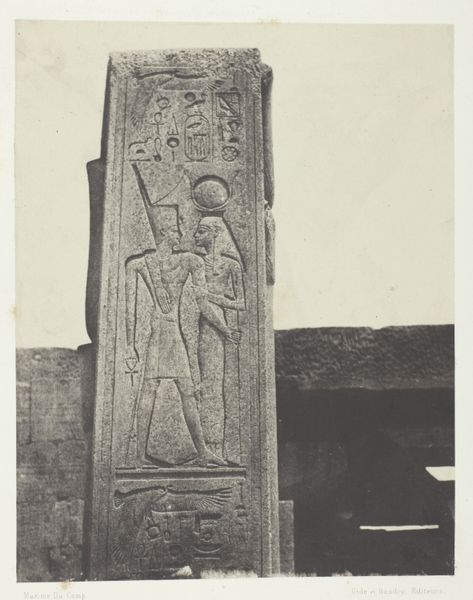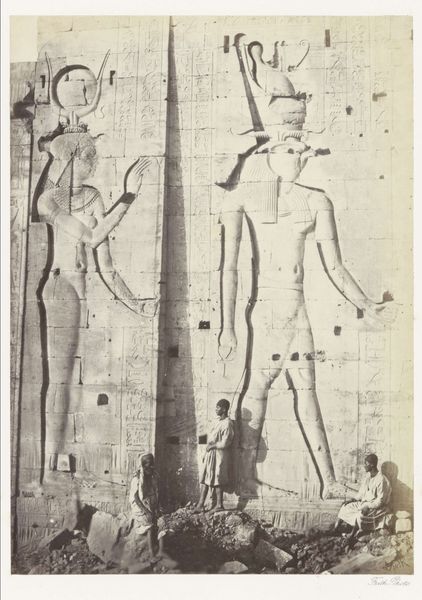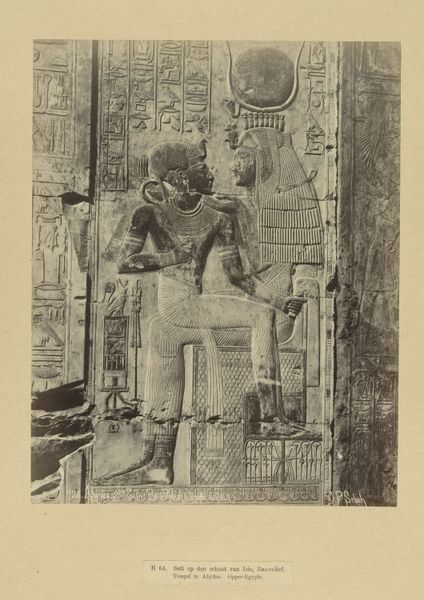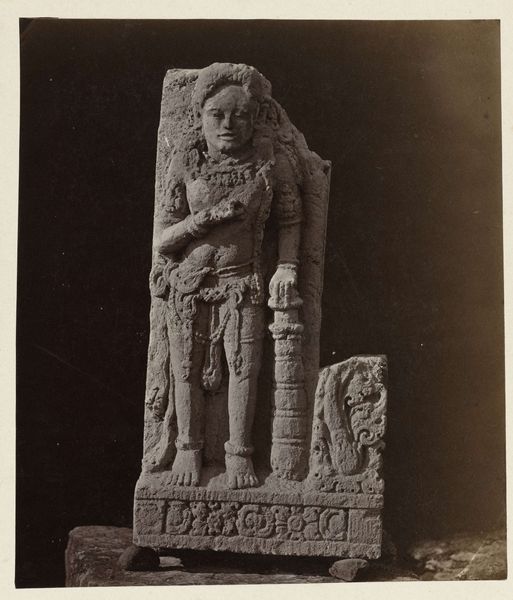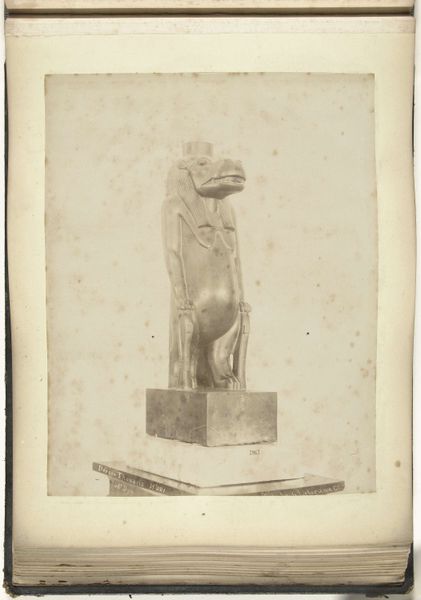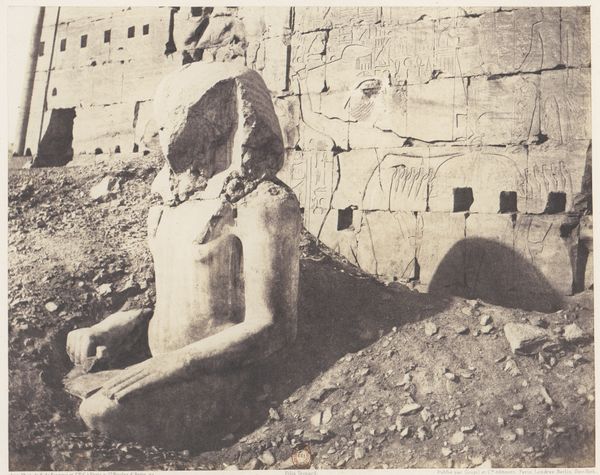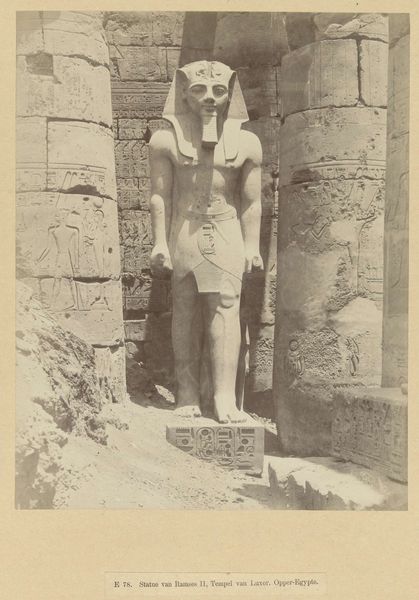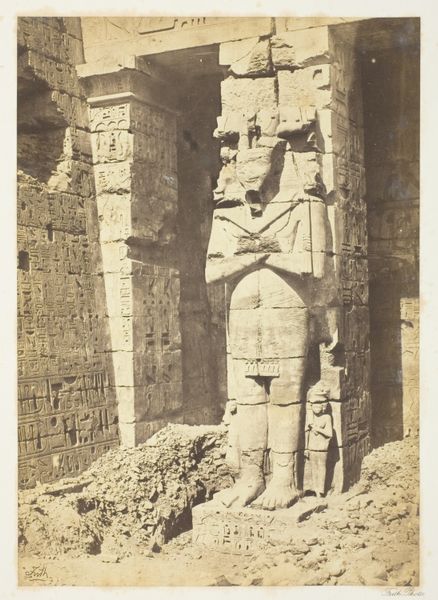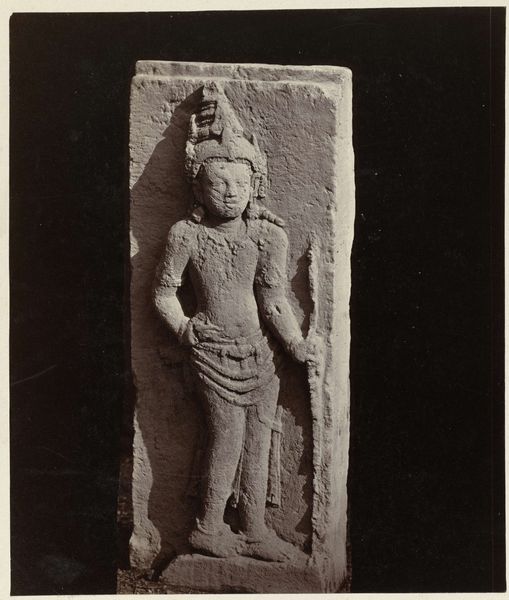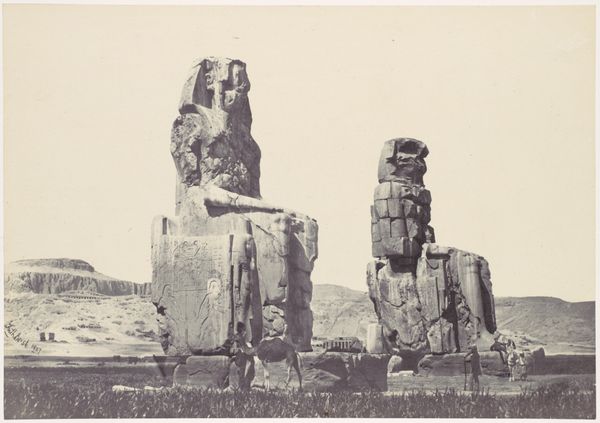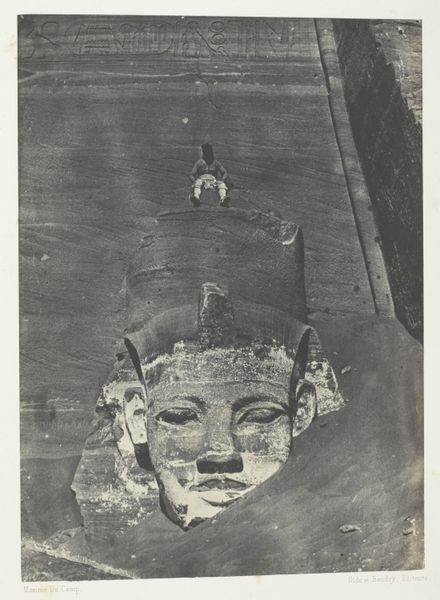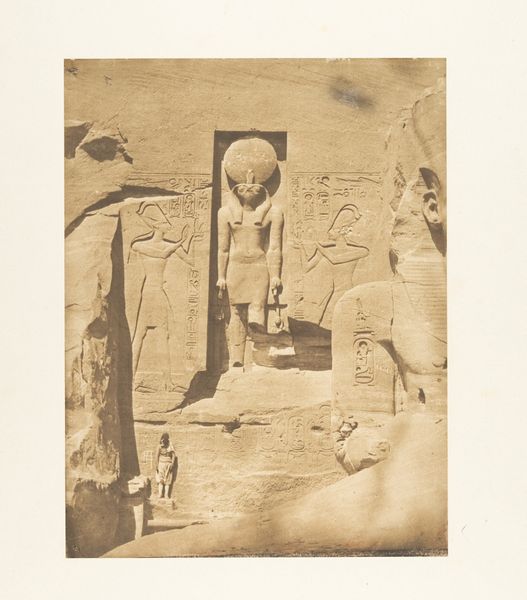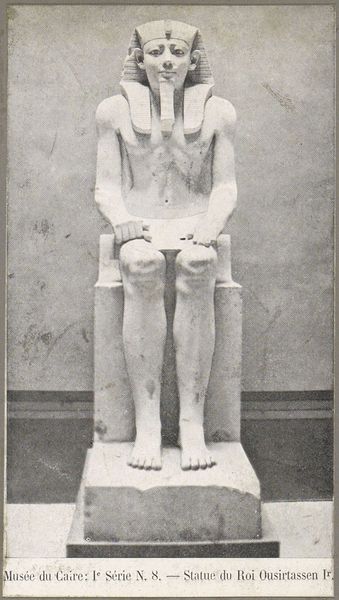
Syout (Lycopolis), Statue Appartenant au Docteaur Cuny 1851 - 1852
0:00
0:00
photography, sculpture
#
portrait
#
sculpture
#
ancient-egyptian-art
#
figuration
#
photography
#
ancient-mediterranean
#
sculpture
Dimensions: 23.6 x 15.4 cm. (9 5/16 x 6 1/16 in.)
Copyright: Public Domain
Curator: This is a photograph titled "Syout (Lycopolis), Statue Appartenant au Docteur Cuny" created between 1851 and 1852 by Félix Teynard. It's currently held here at the Metropolitan Museum of Art. Editor: It's remarkable. The weathered textures give a haunting, ethereal quality. The pose is so static yet dignified, and there's a solemn power radiating from it. Curator: Absolutely. Teynard's work offers valuable insight into 19th-century European engagement with Egyptian artifacts. Focusing on production, we see how photographic expeditions aided in documenting and ultimately possessing cultural heritage. These images helped to satisfy European desires for the exotic. Editor: Yes, but let’s look at the artistic execution here. The use of light and shadow is impeccable, really highlighting the sculpture's form. There's such a stark contrast between the smooth facial features and the deeply etched hieroglyphs on the base that it gives the image so much visual depth. Curator: Consider, too, Doctor Cuny, whose statue this was. What social status did he hold that allowed him this possession, this depiction? These early photographs provided accessible replications for the upper classes to study and acquire. Editor: I’m more intrigued by the composition itself. See how Teynard frames the statue—the angle, the positioning within the frame… It's not just documentation; it's an interpretation, shaping how viewers perceive it. This contributes to the aesthetic value. Curator: The scale of this work too—the large calotype print enabled details to be viewed on a scale unseen until then. How this contributes to the study and collection habits within a European framework tells a greater story than what we first see in its composition. Editor: It highlights the essence of ancient Egyptian art—its permanence, its iconic representation of the figure. It also showcases the capabilities of early photography, proving itself an artistic medium capable of capturing—and transforming—the beauty of sculpture. Curator: Understanding both artistic representation and the material circumstances through which art travels gives a deeper appreciation. Editor: Precisely, appreciating the convergence of artistic form and historical, cultural contexts opens new perspectives.
Comments
No comments
Be the first to comment and join the conversation on the ultimate creative platform.
